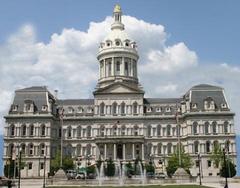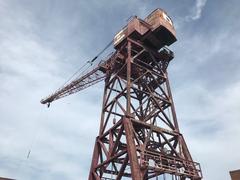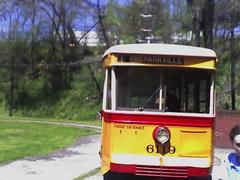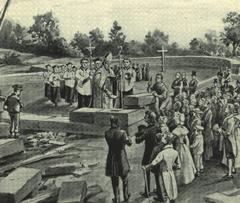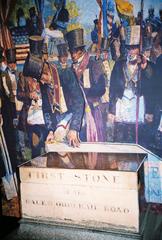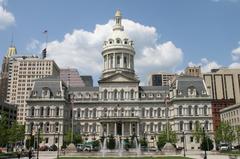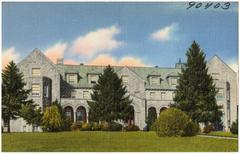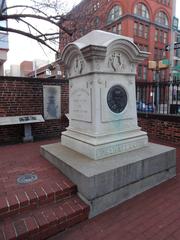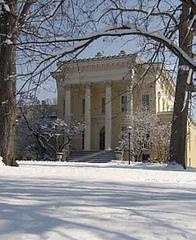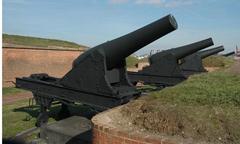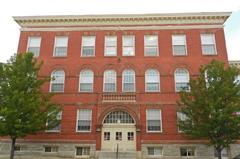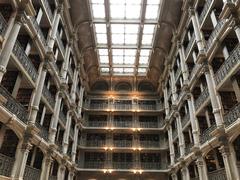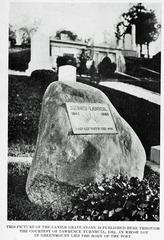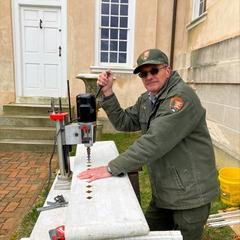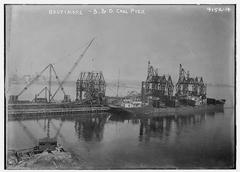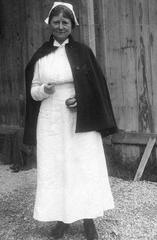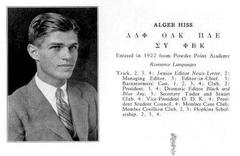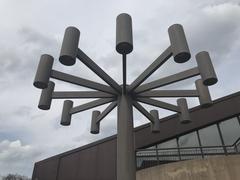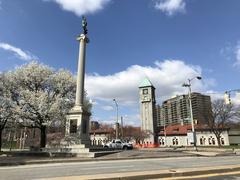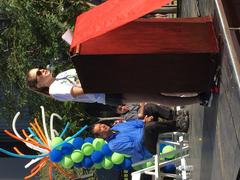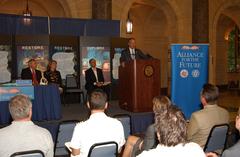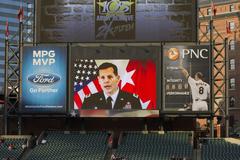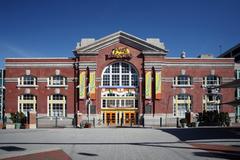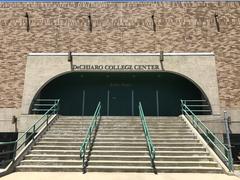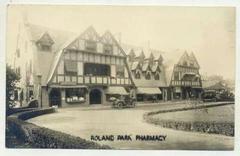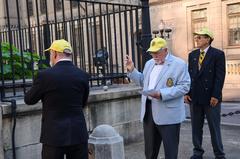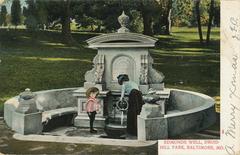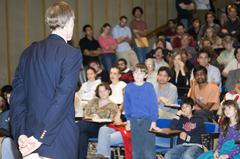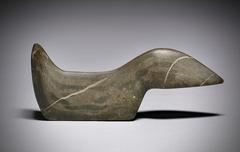
Maryland General Hospital Visiting Hours, Tickets, and Baltimore Historical Sites Guide
Date: 03/07/2025
Introduction
The University of Maryland Medical Center Midtown Campus—formerly known as Maryland General Hospital—is a pillar of Baltimore’s medical and social heritage. Established in 1881 as a teaching hospital, it has evolved through religious stewardship, community engagement, modernization, and integration into the University of Maryland Medical System. Beyond its medical contributions, this institution is deeply woven into Baltimore’s civil rights history, notably through its role in hospital desegregation and healthcare equity initiatives. While the original historic building (formerly the Hebrew Orphan Asylum) is not currently open to the general public, guided tours and special events can be arranged, allowing visitors to appreciate the hospital’s architectural and historical significance (Maryland Manual On-Line; Baltimore City Historical Society; Wikipedia).
This comprehensive guide provides details on the hospital’s history, practical information for visitors (including hours, access, and tours), and recommendations for nearby Baltimore attractions. It also offers travel tips, accessibility information, and resources for a safe and memorable visit—whether you’re interested in medical history, planning a hospital visit, or exploring Baltimore’s rich cultural landscape (USA Tourist).
Contents Overview
- Introduction
- Historical Overview
- Origins and Early Development (1881–1901)
- Religious and Community Management (1901–1948)
- Expansion and Renaming: Maryland General Hospital (1948–1965)
- Mergers and Modernization (1965–1999)
- Integration into University of Maryland Medical System (1999–2013)
- Rebranding as UMMC Midtown Campus (2013–Present)
- Visiting Information
- Visiting Hours
- Admission and Tickets
- Location, Directions, and Accessibility
- Maryland General Hospital Monument
- Visiting and Ticket Information
- Historical Significance
- Tours, Events, and Photography
- Accessibility and Visitor Tips
- Baltimore Area Attractions
- The Historic Building: Redevelopment and Access
- Location and Contact
- Special Events, Tours, and Access
- Amenities, Safety, and Accessibility
- Local Dining and Accommodation
- Frequently Asked Questions
- Conclusion & Recommendations
- Sources and Further Reading
Historical Overview
Origins and Early Development (1881–1901)
Founded in 1881 as a teaching institution for the Baltimore Medical College, Maryland General Hospital played a pivotal role in advancing medical education and public health in Baltimore. At a time of rapid urbanization, it provided essential care and practical training for medical professionals (Maryland Manual On-Line).
Religious and Community Management (1901–1948)
Ownership transitioned to the Sisters of Charity in 1901, followed by the Methodist Church in 1911. Both groups expanded services and reinforced the hospital’s mission of serving Baltimore’s diverse neighborhoods, adapting to the city’s demographic and industrial changes (Maryland Manual On-Line).
Expansion and Renaming: Maryland General Hospital (1948–1965)
Renamed Maryland General Hospital in 1948, this era brought modernization and growth. The hospital notably advanced healthcare equity during Baltimore’s civil rights movement by participating in desegregation efforts (Baltimore City Historical Society).
Mergers and Modernization (1965–1999)
The 1965 merger with Baltimore Eye, Ear, Nose, and Throat Hospital expanded specialized care and outpatient services. The hospital sustained its growth with new programs and community initiatives.
Integration into University of Maryland Medical System (1999–2013)
Becoming part of the University of Maryland Medical System in 1999 brought advanced research, technology, and new educational opportunities to the Midtown Campus (Maryland Manual On-Line).
Rebranding as UMMC Midtown Campus (2013–Present)
In 2013, the hospital was renamed University of Maryland Medical Center Midtown Campus, reflecting its expanded mission, campus modernization, and ongoing commitment to Baltimore’s health and education.
Visiting Information
Visiting Hours
- General: 10:00 AM to 8:00 PM daily. Hours may vary by department and are subject to change based on health policies. Always verify with the hospital before visiting.
- Special Units: Some departments may enforce additional restrictions. Contact the specific department for exact hours.
Admission and Tickets
- Patient Visits: No tickets are required for patient-related visits.
- Guided Tours: Not routinely offered to the public. For historical tours or special events, contact the Baltimore City Historical Society or the hospital’s community relations office in advance.
Location, Directions, and Accessibility
- Campus Address: 827 Linden Ave., Baltimore, MD 21201 (Maryland Manual On-Line)
- Transportation: Accessible by multiple bus routes and the Baltimore Light Rail. Plan using local transit guides.
- Parking: Limited on-site parking plus additional nearby garages. Consider public transit during peak hours.
- Accessibility: Fully accessible with ramps, elevators, and accommodations for visitors with disabilities. Contact the hospital for specific needs.
Maryland General Hospital Monument: Visitor Guide
Visiting and Ticket Information
- Hours: Open to visitors Monday–Saturday, 9:00 AM to 5:00 PM. Check for event-related closures.
- Admission: Free. Guided tours can be arranged through the hospital’s community office.
Historical Significance
The monument honors the hospital’s enduring service to Baltimore’s diverse and underserved populations. It symbolizes efforts to address health disparities and promote community growth.
Tours, Events, and Photography
- Tours: Walking and historical tours, including surrounding Midtown landmarks, are available by appointment.
- Events: Occasional health fairs, workshops, and educational programs are hosted at or near the monument.
- Photography: The monument’s design and Midtown setting offer excellent photo opportunities. Exterior photography is generally permitted.
Accessibility and Visitor Tips
- Accessibility: Wheelchair accessible with ramps and paved walkways.
- Tips: Wear comfortable shoes, use public transportation when possible, and review information plaques for historical context.
Baltimore Area Attractions
Enhance your visit by exploring nearby sites:
- Walters Art Museum: World-class art collections.
- Maryland Science Center: Interactive exhibits and planetarium.
- Mount Vernon Neighborhood: Historic architecture and vibrant culture.
- Inner Harbor: Iconic waterfront with museums, shops, and restaurants (USA Tourist).
The Historic Building: Redevelopment and Access
Location and Contact
- Historic Address: 2700 Rayner Avenue, Mosher neighborhood, Baltimore.
- Access: Currently under redevelopment as the Center for Healthcare & Healthy Living by Coppin Heights Community Development Corporation (Wikipedia).
Special Events, Tours, and Access
- Public Access: Not open for routine tours; access may be granted during special events or by arrangement with Coppin State University or Coppin Heights CDC.
- Planning: Contact these organizations in advance for tour availability.
Amenities, Safety, and Accessibility
- Amenities: Active hospitals offer cafeterias, waiting areas, Wi-Fi, and charging stations.
- Safety: Follow current health guidelines. Visitor restrictions may be in place based on public health advisories (LifeBridge Health Visitor Guidelines).
- Accessibility: Historic sites may have limited access; contact administrators ahead for accommodations.
Local Dining and Accommodation
- Dining: Options range from local eateries to national chains nearby.
- Accommodation: Hotels in Inner Harbor and Mount Vernon offer comfort and proximity to city attractions (Baltimore Visitor Center).
Frequently Asked Questions (FAQ)
Q: Are tickets required to visit the historic hospital building?
A: No general admission; access is limited to special events or guided tours.
Q: What are the visiting hours for Maryland General Hospital?
A: The historic site is not an active hospital. For active facilities, hours vary—check individual hospital websites.
Q: Is photography allowed?
A: Exterior photography is generally permitted; seek permission before photographing interiors or people.
Q: How do I get to the campus from BWI Airport?
A: Use taxis, rideshares, or public transit; pre-arrange transport during peak periods (Wolters World).
Q: Is the site wheelchair accessible?
A: Accessibility may be limited at the historic building; contact administrators for details.
Washington Monument in Baltimore: History and Visitor Info
Overview
The Washington Monument in Baltimore’s Mount Vernon neighborhood is the nation’s first major memorial to George Washington and a must-see for history and architecture enthusiasts. Designed by Robert Mills and completed in 1829, the 178-foot monument offers panoramic city views from its observation deck.
Visiting Details
- Hours: Tuesday–Sunday, 10:00 AM to 5:00 PM. Closed Mondays and major holidays.
- Tickets: Free admission; reserve timed tickets online for the observation deck.
- Tours: Guided tours and educational programs available; check schedules online.
- Accessibility: The monument’s observation deck is only accessible via stairs. Grounds are wheelchair accessible.
Nearby Attractions
- Walters Art Museum
- Maryland Historical Society
- Cafés, shops, and public transit access in Mount Vernon
Summary and Visitor Recommendations
The University of Maryland Medical Center Midtown Campus embodies Baltimore’s legacy of healthcare innovation, education, and community service. Its transformation from Maryland General Hospital to a modern medical campus—plus ongoing redevelopment of its historic building—reflects a deep commitment to both heritage and progress. While general access to the original building is limited, visitors can engage with the hospital’s history through the Maryland General Hospital Monument, guided tours, and community events. Exploring nearby attractions like the Inner Harbor or Mount Vernon will further enrich your Baltimore experience (Maryland Manual On-Line; Wikipedia).
For updated information, download the Audiala app, visit official hospital and tourism websites, and reach out to local historical organizations for the latest on events and tour opportunities.
Sources and Further Reading
- Maryland Manual On-Line, 2025, Maryland State Archives
- Baltimore City Historical Society, 2025
- USA Tourist, Baltimore Maryland Travel Guide
- Wikipedia, Hebrew Orphan Asylum (Baltimore, Maryland)
- University of Maryland Medical Center Midtown Campus Official Visitor Page
- LifeBridge Health Visitor Guidelines
- Baltimore Visitor Center
- Wolters World
- Tourist Secrets


